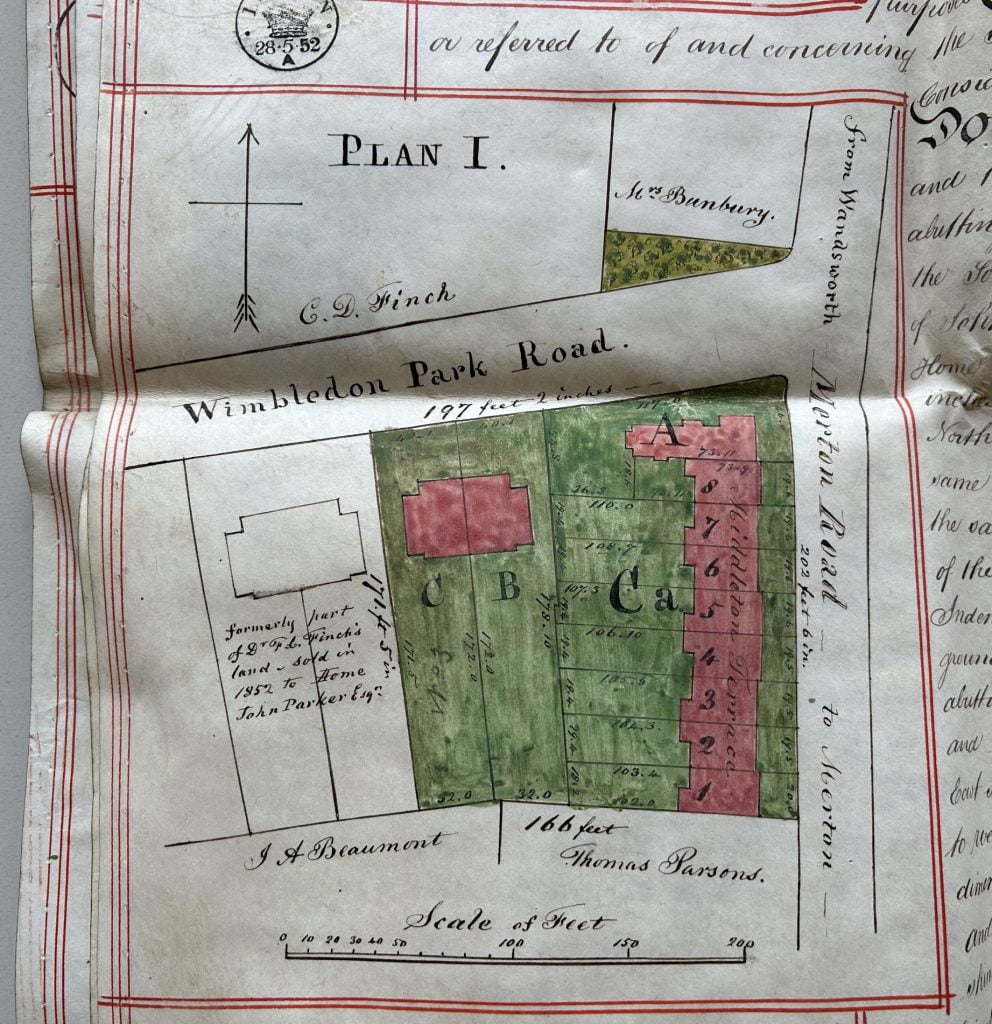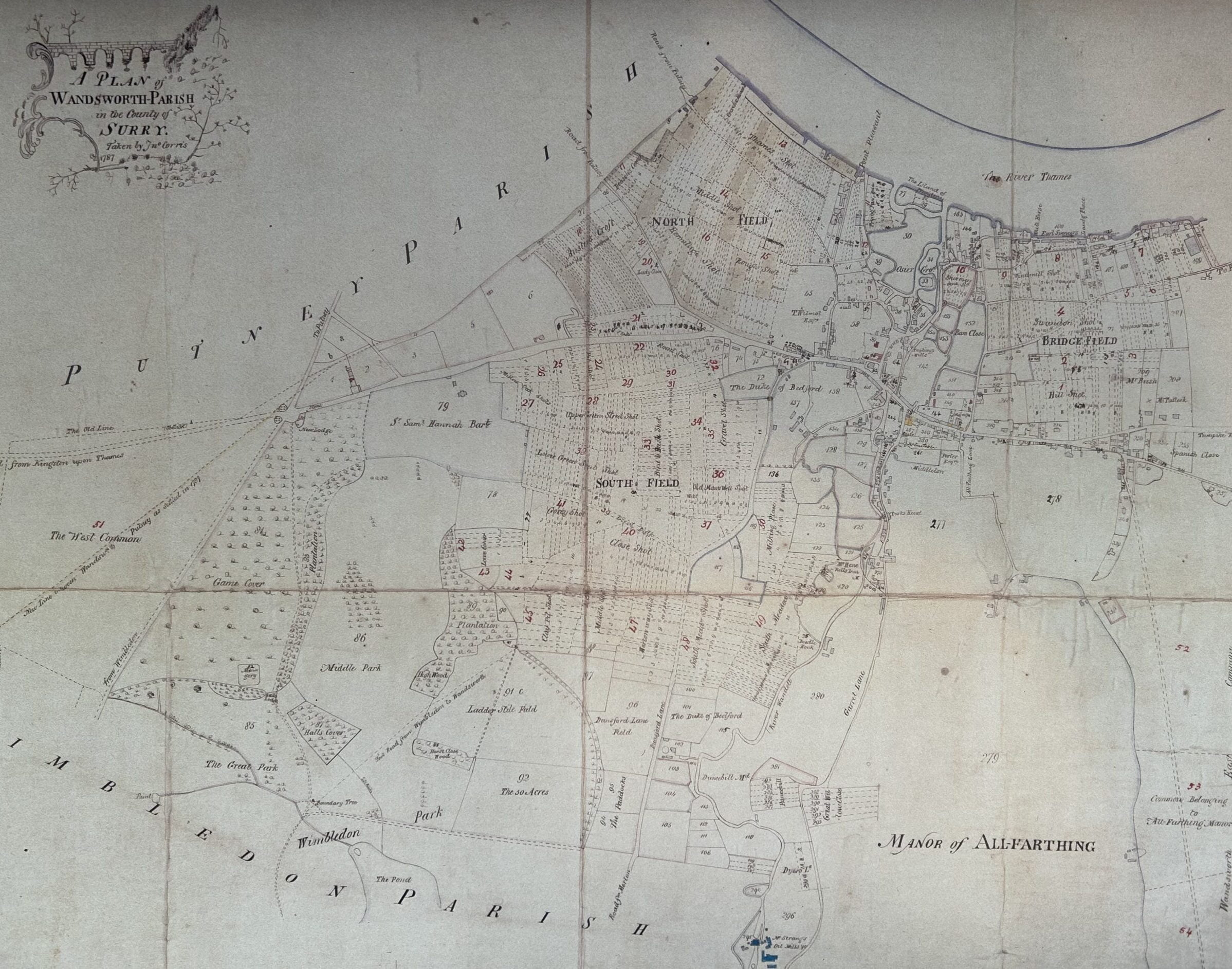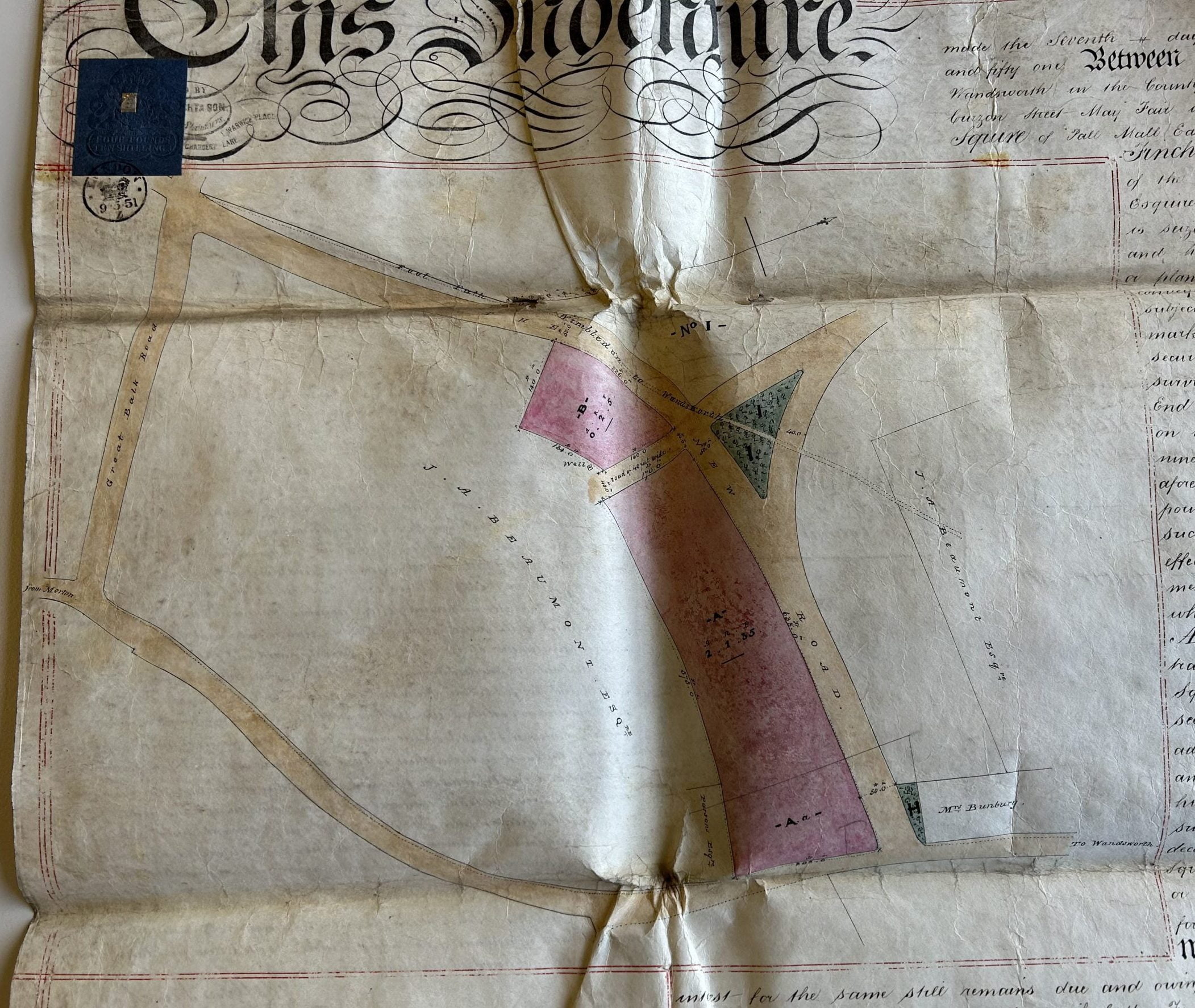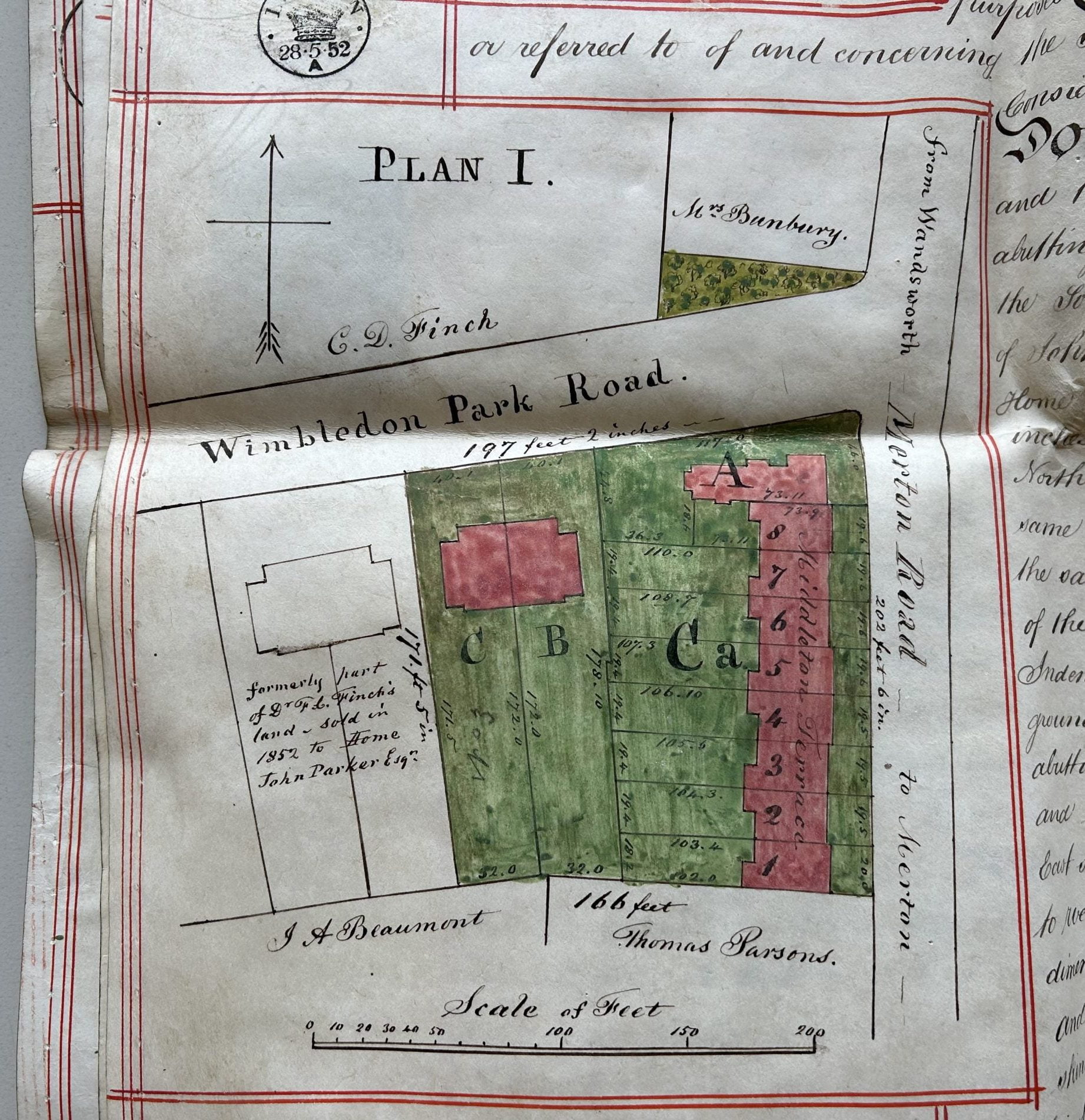
The Creation of Wimbldeon Park Road – Part IV – John Augustus Beaumont
This series of blogs in our From The Archives series is intended as a resource for schools and local residents who are interested in researching local history.
We are very happy to help schools with access to relevant materials. However, the images that are reproduced here should be assumed to be the copyright and may not be reproduced without license from the archives and commercial use is therefore strictly prohibited.
If you live in Wandsworth and think of Wimbledon you think of Wimbledon Park Road and most people assume it has been there for all time.
Wimbledon Park Road is, in fact, a creation of John August Beaumont and his Wimbledon Park Estates company.
John Corris’ 1787 Map of Wandsworth shows no such road.
The road pretty much follows the course of ‘The Footpath from Wimbledon to Wandsworth’ that is marked on The John Corris map. Although, curiously, it stops where the footpath reaches the South Field at Clay Shot.
In real life, the footpath is shown on other sources starting from Merton Road and tracking the path of Southfields Road, sometimes called South Field(s) Road to confuse matters.

We can see on a deed dated 1851, in which John Augustus Beaumont is selling a parcel of land, that Beaumont was intending to create a ‘New Road’ across his Wimbledon Park Estate which leaves Merton Road and then approximately follows the historical footpath that predated Southfields Road and led to Wimbledon Village.

The road then appears to have acquired the name The Wimbledon Park Road the following year – appears as until the Metropolis Management Acts of 1855 came into force the naming of roads was quite arbitrary. Post the Acts coming into force in 1855 the Metropolitan Board of Works had to approve all new road formations. A few sample files exist in the London Metropolitan Archives but sadly the vast majority were weeded out by Greater London Council archivists before the archives came to be in the hands of the City of London Corporation.

and something else
Rather uniquely we can see both side of the transactions with Cotton Finch because the oversight committee of The County Fire Office [CFO] was keeping a close eye on the situation as well as keeping voluminous records and making period reports to The Board of Directors of CFO.


